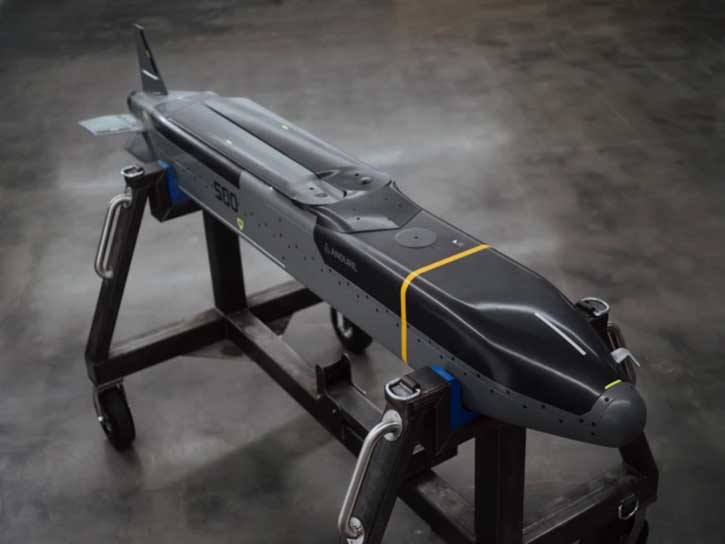Anduril Industries has recently introduced its new “Barracuda” family of autonomous cruise missiles, addressing air forces’ need for affordably increased stockpiles of precision weapons. The Barracuda missiles are currently in the company flight-testing phase. This development comes as the U.S. military seeks to enhance its deterrence against peer competitors, particularly in potential conflicts with China.
The Barracuda family consists of three variants:
The Barracuda family consists of three members, each with unique characteristics. The smallest, the Barracuda-100, is designed for air launch and high-volume missions. Its sibling, the Barracuda-250, offers a middle ground in size and capability. The largest in the trio, the Barracuda-500, stands out with its adaptability to swarm attacks using cargo launch design.
Despite their differences, all three Barracudas share common subsystems that set them apart in bespoke-designed cruise missiles. They can travel long distances, carry payloads over 100 pounds, maneuver up to 5Gs, and loiter in the air for more than two hours. Anduril’s engineers explained that these capabilities allow for a wide range of mission types, from gathering intelligence to engaging targets with kinetic or other effects.

Barracuda-100: The smallest variant, with a range of 85 nm and a payload of 35 pounds, is designed for high-volume, low-cost missions. It can be launched from the ground or by rail launch from attack helicopters, tail dropped from C-130 transport aircraft, or launched from the air, which shortens its operational range to 60 nm.
Barracuda-250: This medium-sized variant, carrying the same warhead as the 100, is also air-launched, offering a balance between size and capability. This version extends the range to 200 nm for air-launched versions or 150 for surface-launched versions. It is designed for internal carriage on all types of F-35 and bombers or externally carried by multirole strike fighters (F15, F16, F18E/F). It can also be launched from the ground or surface vessels.
Barracuda-500: The largest variant carrying a bigger warhead (over 100 pounds), still smaller than current cruise missiles. It is configured for air launch only, either from strike fighters or transport aircraft such as the C-17 and C-130 using the Rapid Dragon palletized system, enabling the rapid deployment of missile swarms at targets within a 500 nm range.

Aimed at Cost-Efficiency
The philosophy behind the Barracuda’s design is equally innovative. In an age where military budgets are scrutinized, Anduril has focused on cost-effectiveness to enable mass production. The Barracuda missile requires less than ten tools to produce and 50% fewer parts than traditional systems, resulting in a product that’s 30% cheaper than comparable missiles. The missile leverages commercially and widely available components across six common subsystems. Open systems architecture and software-defined, hardware-enabled design aim to enable rapid integration and testing, leveraging the latest advancements over the weapon lifecycle and implementing advanced, autonomous behaviors such as collaborative mission autonomy.
Anduril was selected by the US Air Force and Defense Innovation Unit as one of four competitors for their future Enterprise Test Vehicle. Anduril is pitching the Barracuda-500 for this program.






















